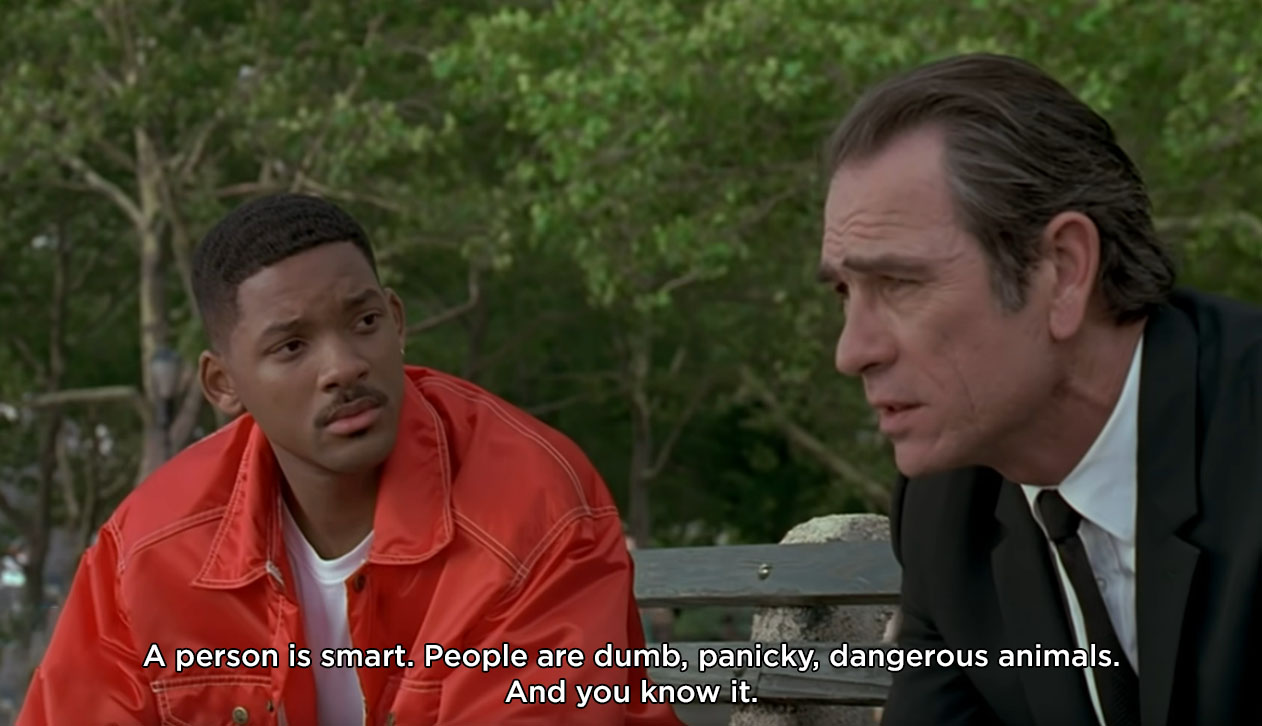DISCUSSING
In the Shadow of the Spire – Session 27C: The Saint of Chaos
Now that the half-orc was more of a curiosity than a threat, the crowd that had been scattering in a rapid retreat instead began to draw closer. But just as it seemed as if they had successfully calmed the situation, another man suddenly grabbed at his eyes. Bolts of blue lightning shot out of them, striking several people in the crowd. The thick stench of ozone filled the air. At least a half dozen people collapsed.
Panic erupted once again. In the midst of it, Tee was suddenly struck by the sight of a dark-cloaked man striding boldly down the street and seemingly oblivious to the chaos around him…
Crowds.
In an urban campaign, you find them cropping up all the time:
- on the street
- in a busy market
- at the local tavern
- storming the necromancer’s castle with pitchforks
Handling dozens or hundreds (or thousands) of NPCs individually would, obviously, be a hilariously bad idea. So you generally want to figure out some way of handling the entire crowd as a single entity.
Often, of course, a crowd is just part of the set dressing: You’re in a shopping mall and it’s filled with people. That’s pretty straightforward. At most you’ll want to think about what effect the crowd might have on the actions of the PCs and significant NPCs in the scene. (For example, the PCs might need to make a DC 10 Dexterity (Acrobatics) check to race through a thick crowd; on a failure, the crowd is treated as difficult terrain for them.)
But sometimes the Green Goblin comes swooping in on his glider and starts throwing pumpkin bombs around. Now combat has broken out and the crowd is panicked.
What often seems to happen is that the crowd is described as running and shouting (while having little or no effect on how things play out), and then they completely clear out as quickly as possible to simplify things even more.
But where’s the fun in that?
When I was preparing the riot scene in Session 4 of the campaign, I prepped a full set of rules for handling crowds and mobs in D&D 3rd Edition. After some refinements from playtesting them, I posted them here on the Alexandrian way back in 2007.
Those rules are useful (with advanced options that help when the crowd is the focal point of the scene), and you could use them as a basic structure for fashioning similar rules in other games:
- What is the effect of moving through a crowd? (A moving crowd?)
- What happens when a crowd panics?
- How can the PCs manipulate crowds?
- What happens when the crowd turns into a mob? (i.e., a crowd that can take focused violent action, whether directed or random)
If you want to keep it simpler, though, I have a few quick rules of thumb for handling crowds.
First, give the crowd some basic characteristics so that it “exists” in the scene. I recommend:
- Making the crowd difficult terrain (or whatever the local equivalent is in your current RPG). As mentioned above, let the PCs make an Acrobatics check as part of movement to ignore this (by deftly weaving through the crowd).
- Having the crowd offer cover to anyone in it.
Design Note: These two factors have a nice balancing effect — the cover encourages a character to move into a crowd; the difficult terrain imposes a cost for doing so.
Second, put the crowd on your initiative list. In D&D, I like putting them at initiative count 10 (so that PCs might go before or after the crowd, depending on their initiative check). This is, if nothing else, a great way to make sure you don’t forget to include the crowd in the scene.
Whenever the crowd’s initiative count comes up, the crowd does something. This might be:
- Just a colorful description (which will help make sure that the crowd is a consistent part of the scene and doesn’t get forgotten about or glossed over).
- A bystander in the crowd being placed in jeopardy.
- A random character needs to make a saving throw or take damage.
- Make a saving throw or get knocked down.
- The crowd moves.
And so forth.
Make sure to have the crowd affect (or potentially affect) both NPCs and PCs.
Third, create a short list of crowd actions. These work like legendary actions in D&D 5th Edition: The crowd has actions or reactions they take after another character’s action, and they can take X of them per round. (Let’s say three, by default.) The things they can do will be similar:
- Knocking people down
- Interfering with attacks (the jostle the archer’s arm, inflicting disadvantage on the attack roll)
- Making an attack against a character
- Moving
Et cetera.
Keep in mind that the crowd is not a bad guy, so these actions are a choice you’re making as the GM to model the crowd’s behavior. This also means that some crowd actions might actually be detrimental to the crowd. For example, a crowd reaction might be “1d6 bystanders get caught in the crossfire.”
NEXT:
Campaign Journal: Session 27D – Running the Campaign: Trigger & Stitch
In the Shadow of the Spire: Index













It’s also good to use some other mechanics we are already familiar with and apply them to a mob: they are a variety of ooze. A large, amorphous blob that breaks up into smaller oozes as it takes damage. It can be treated as a single entity and react as such to stimuli. Or like a swarm, it simply deals damage every round you remain in it, no attack rolls required.
In the original rules, you stated that the crowd moves on initiative count 0. What changed your mind?